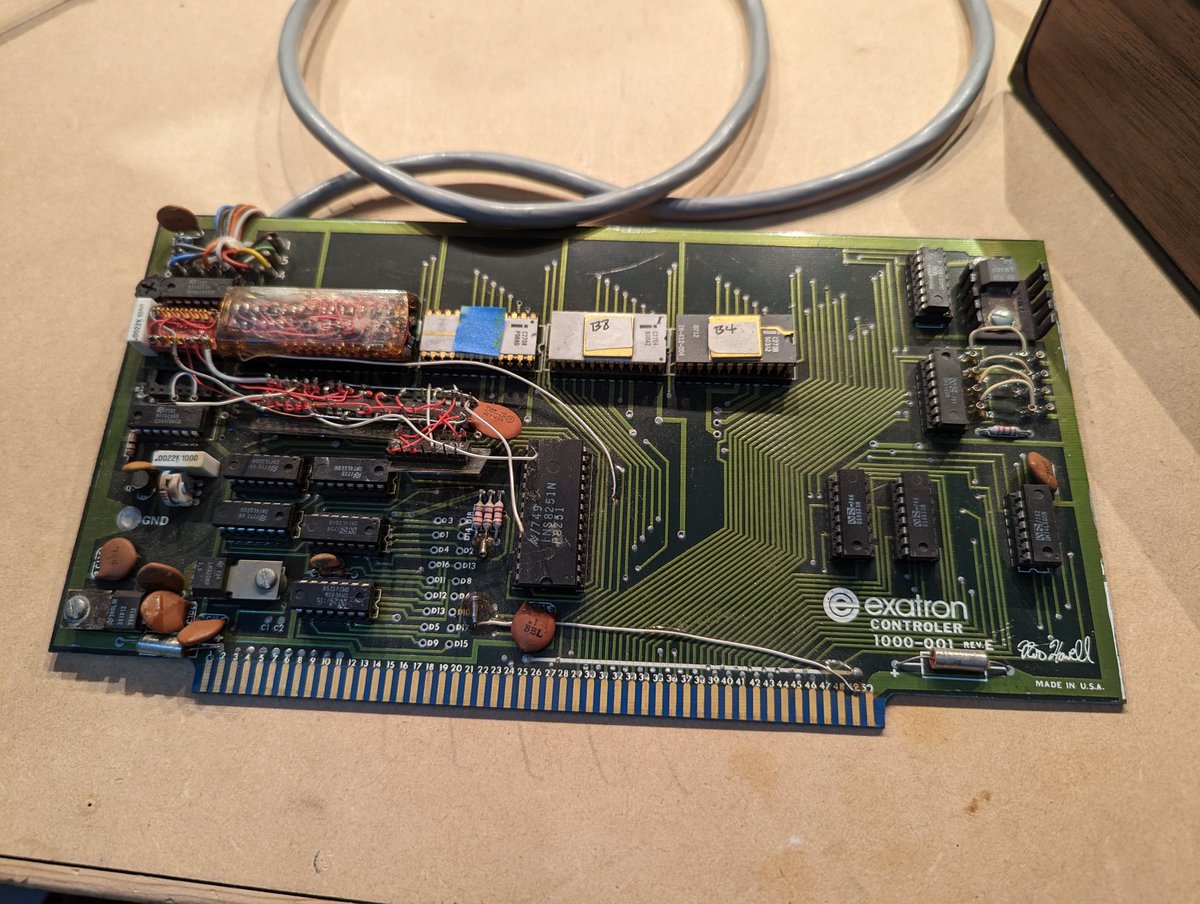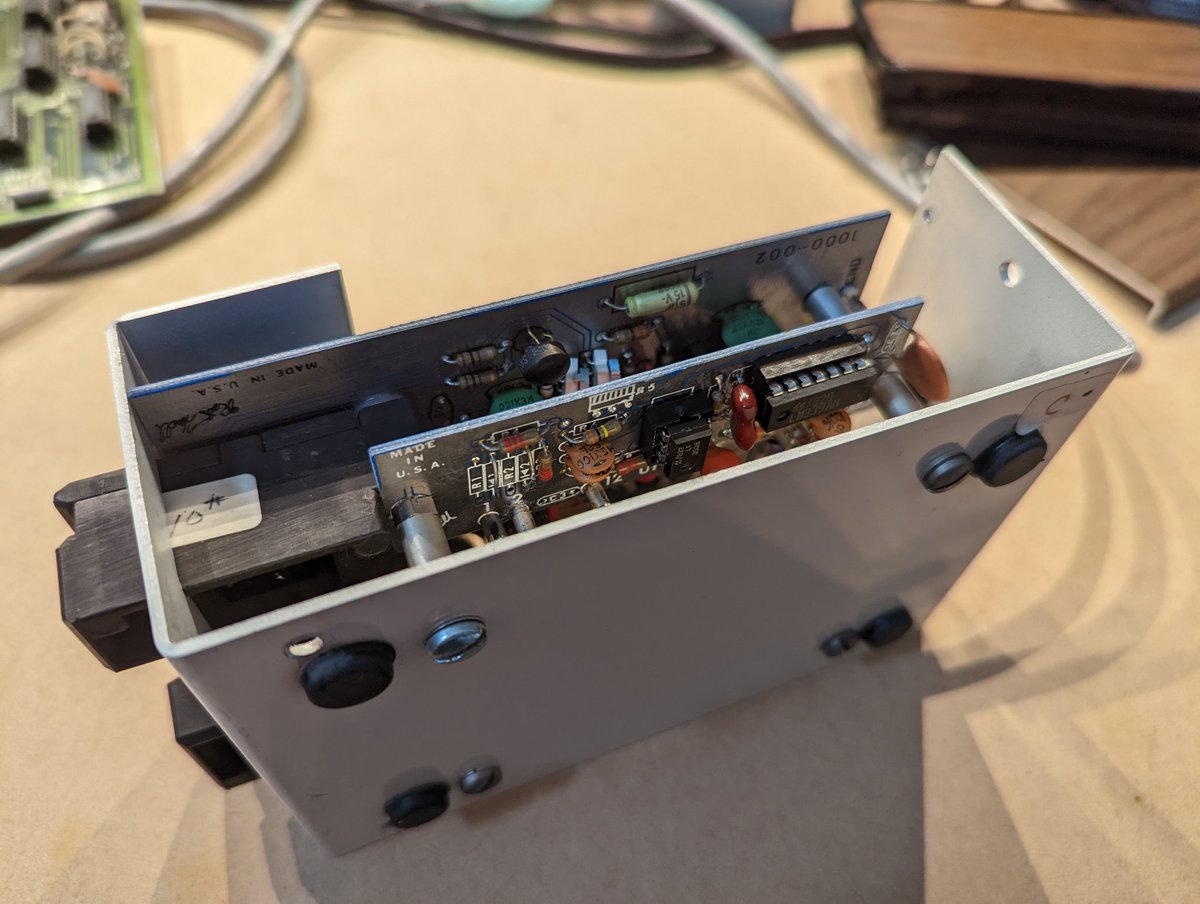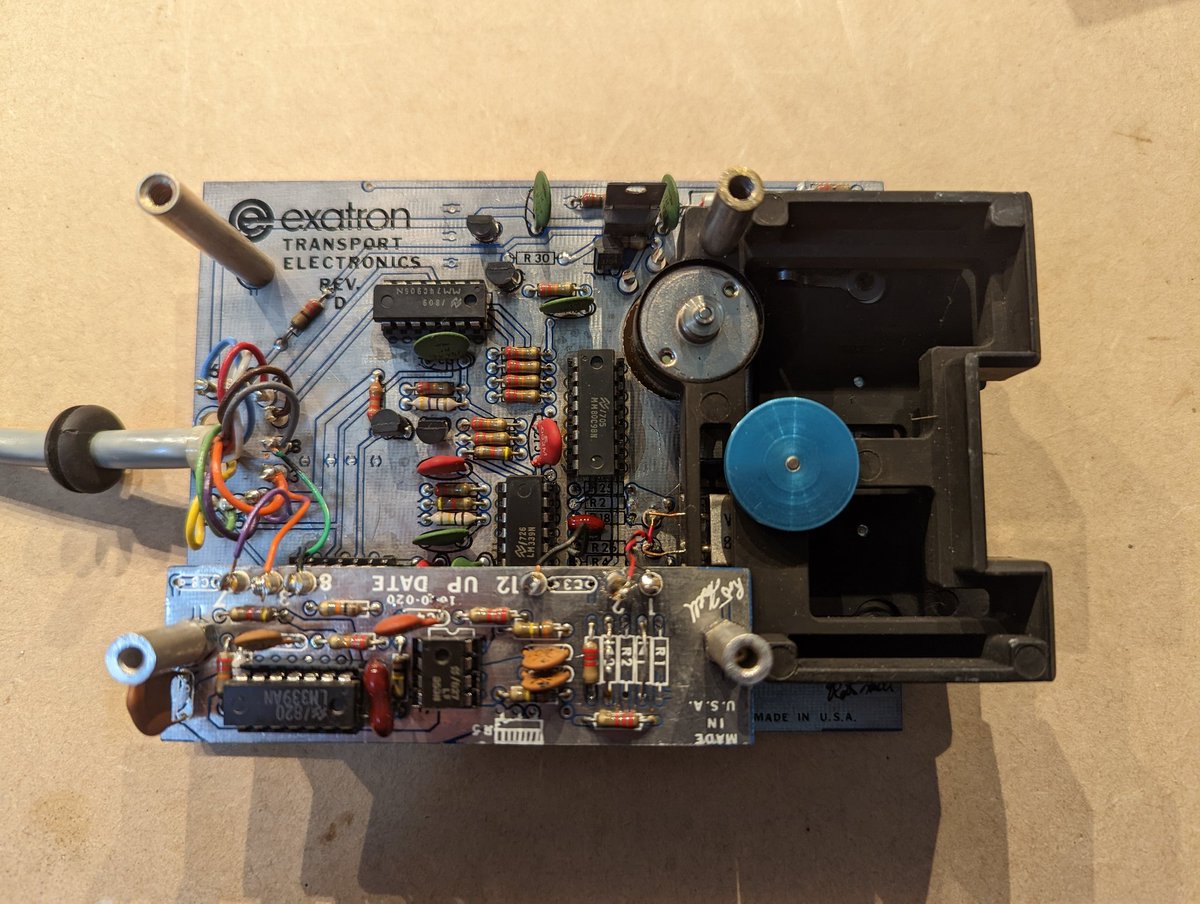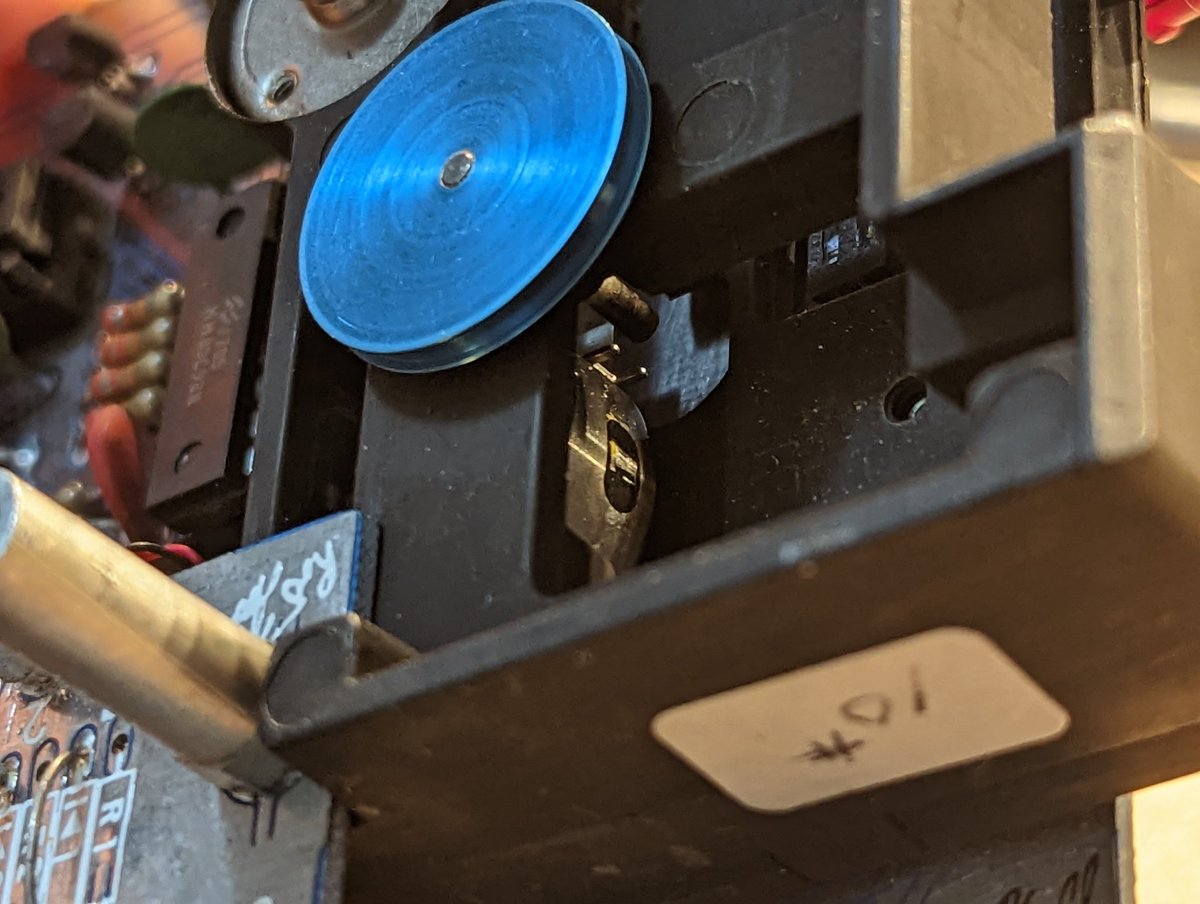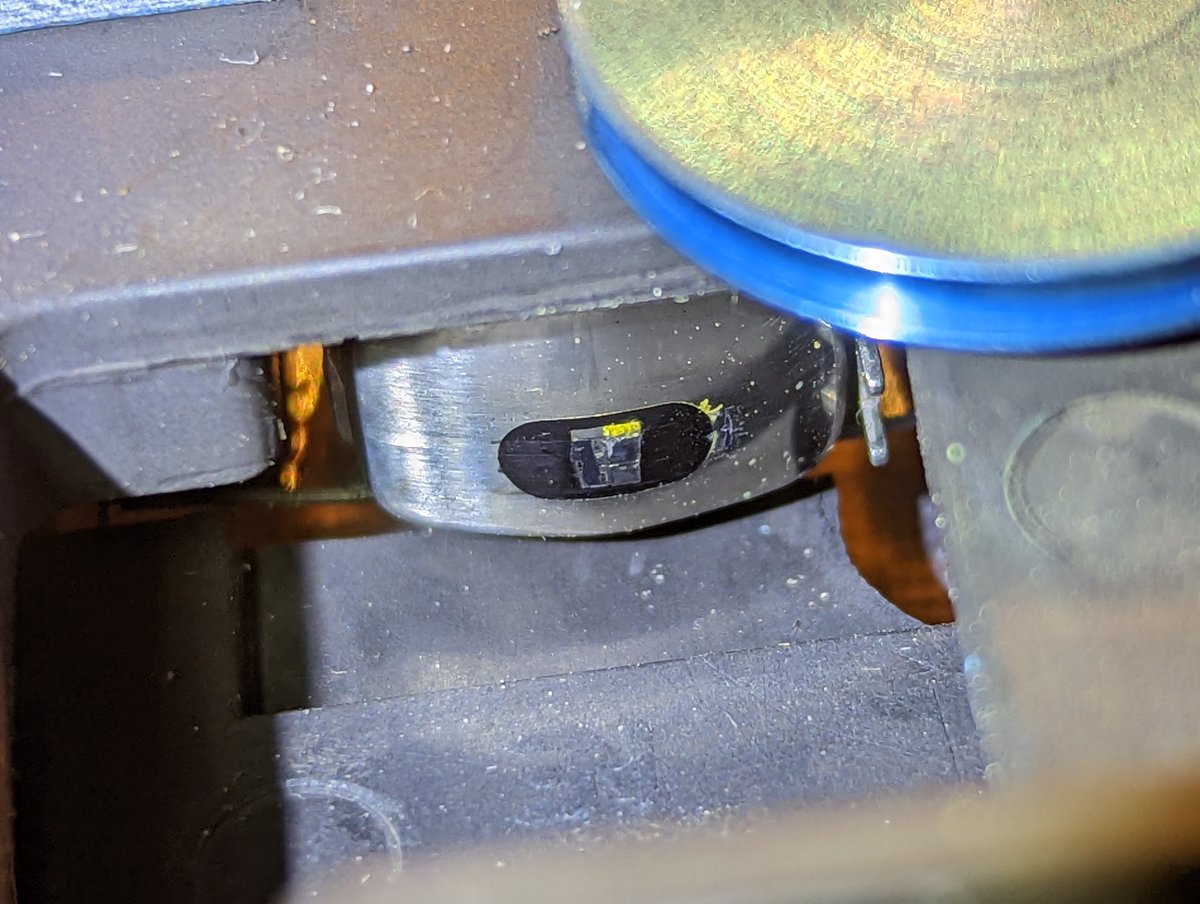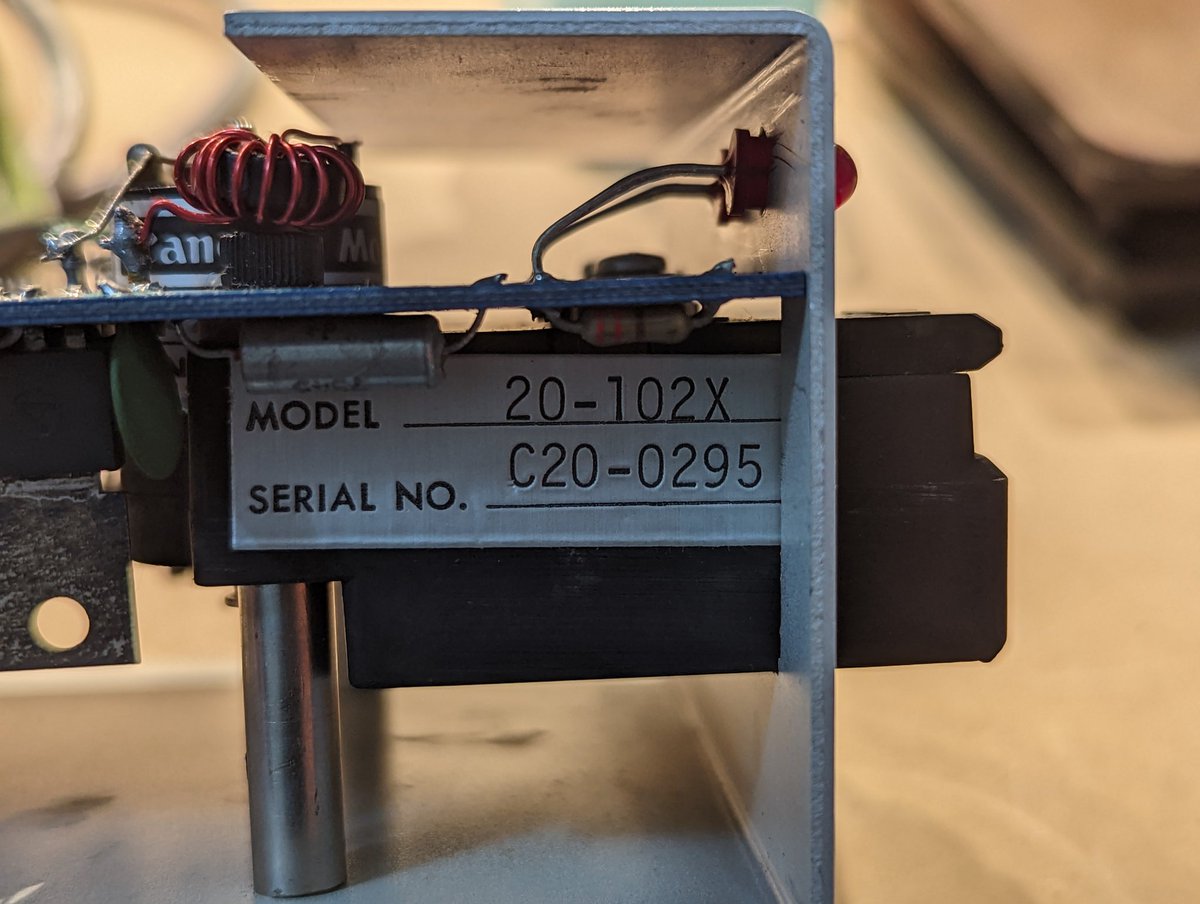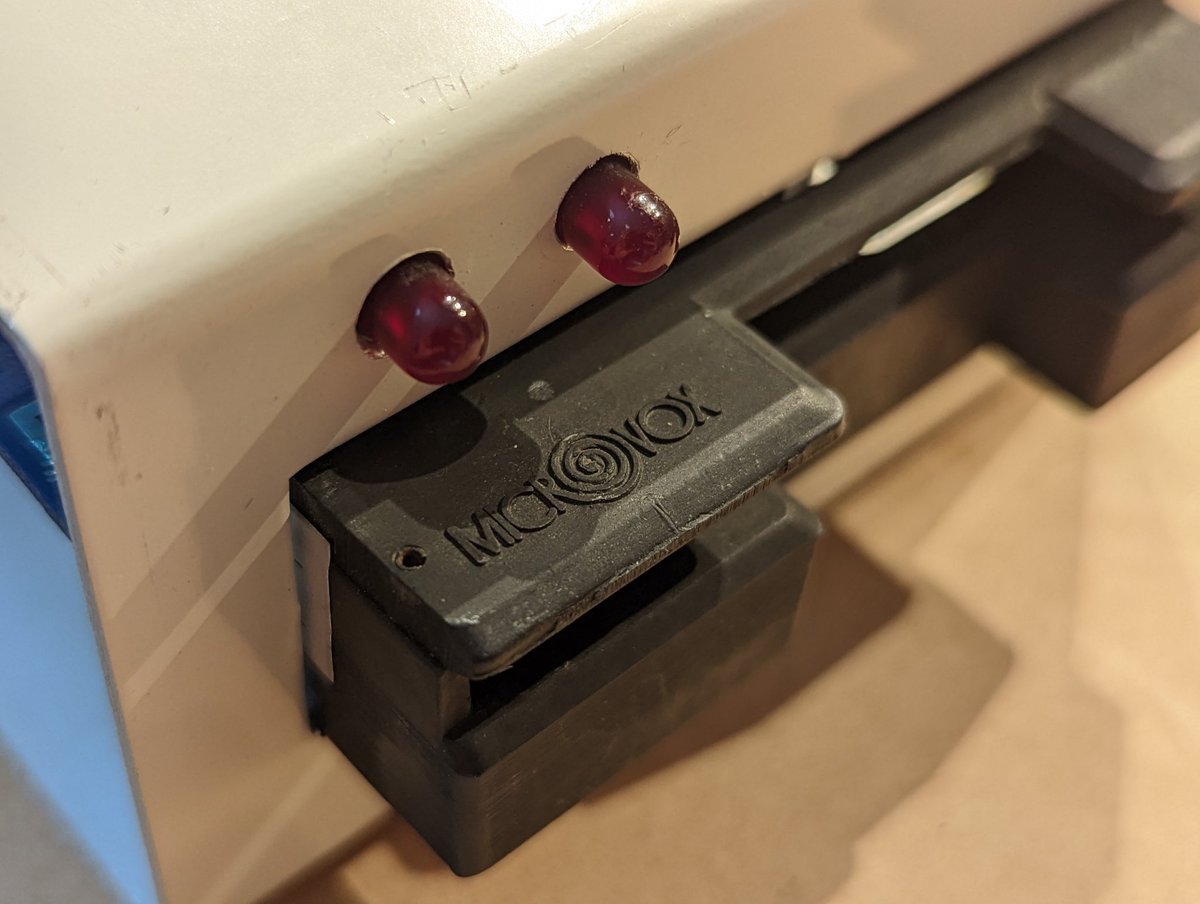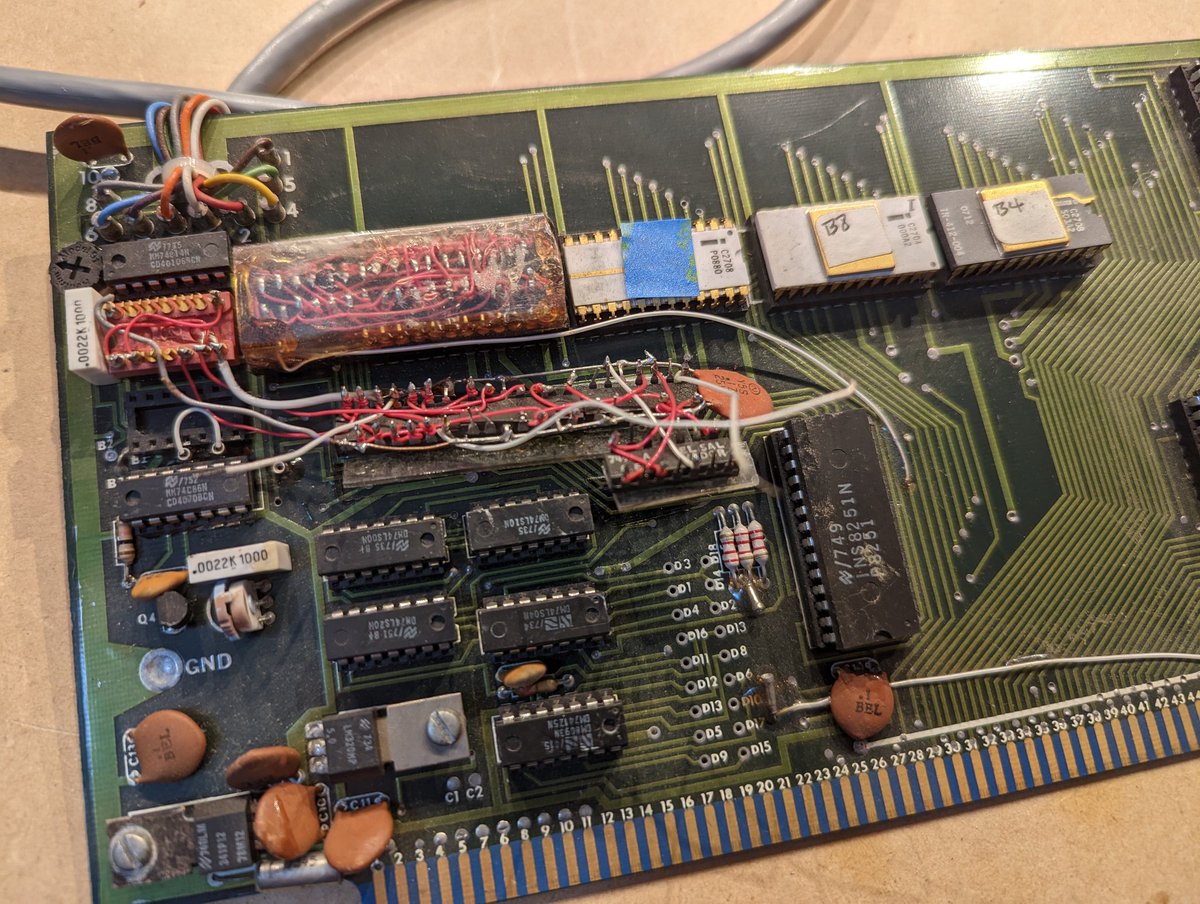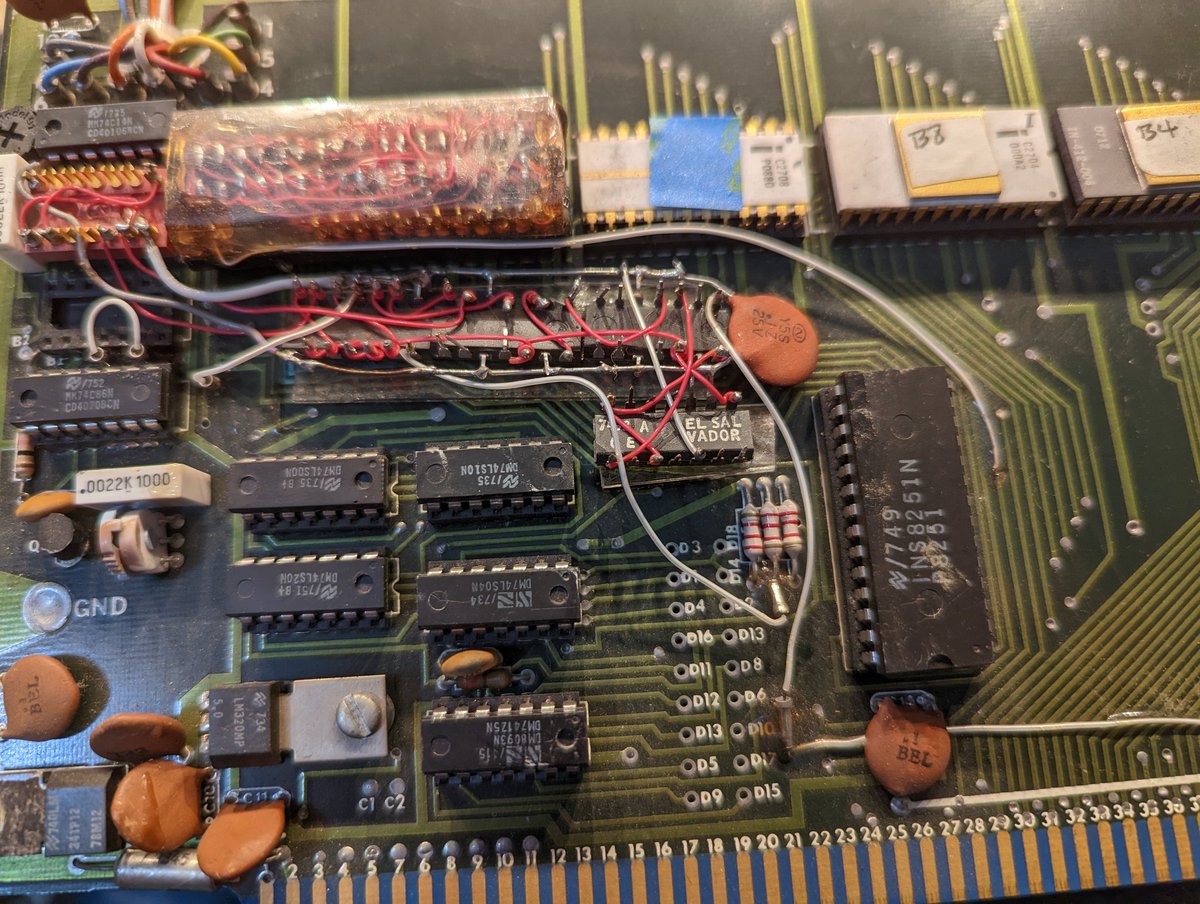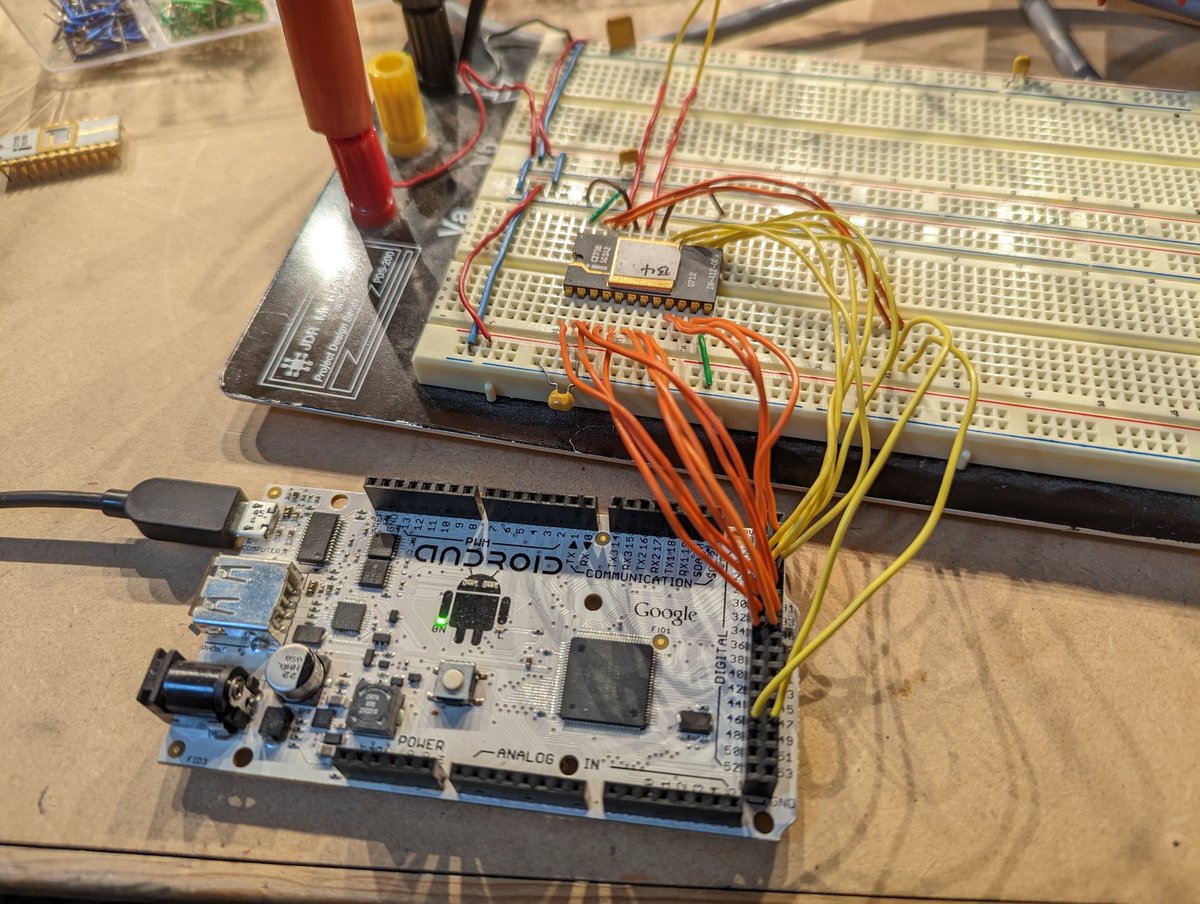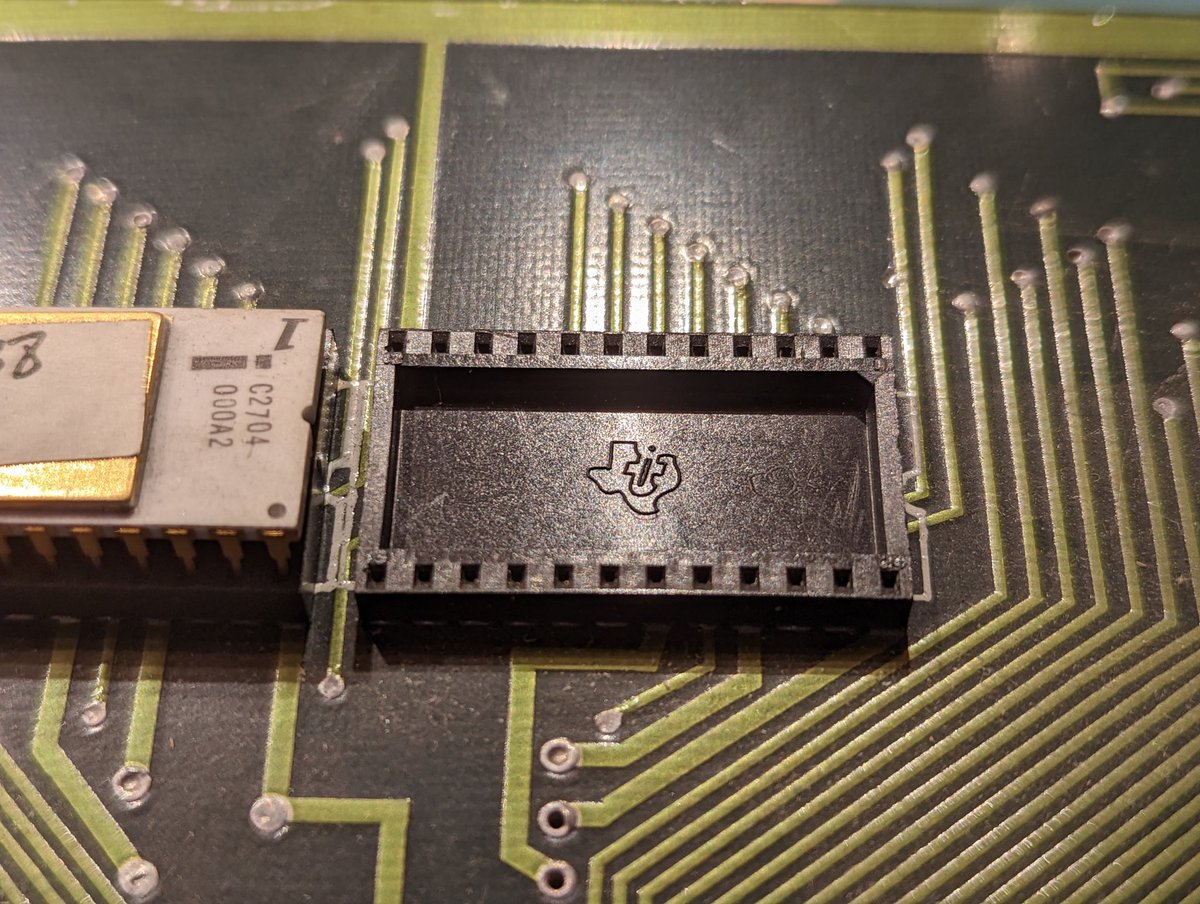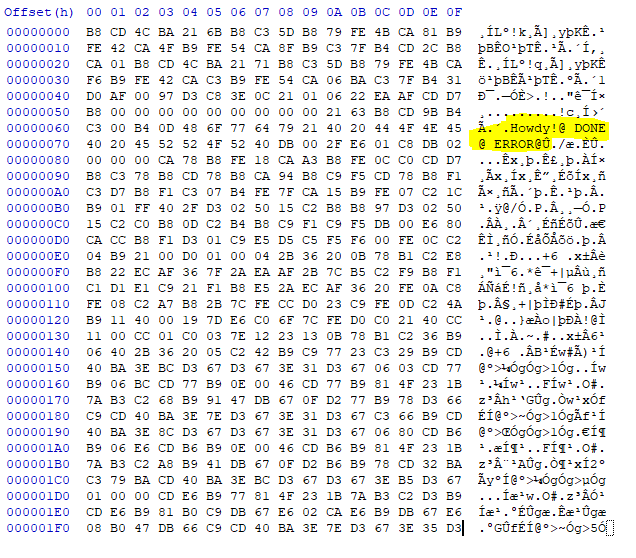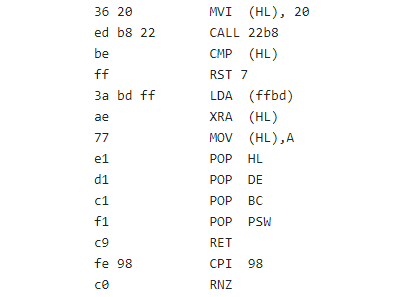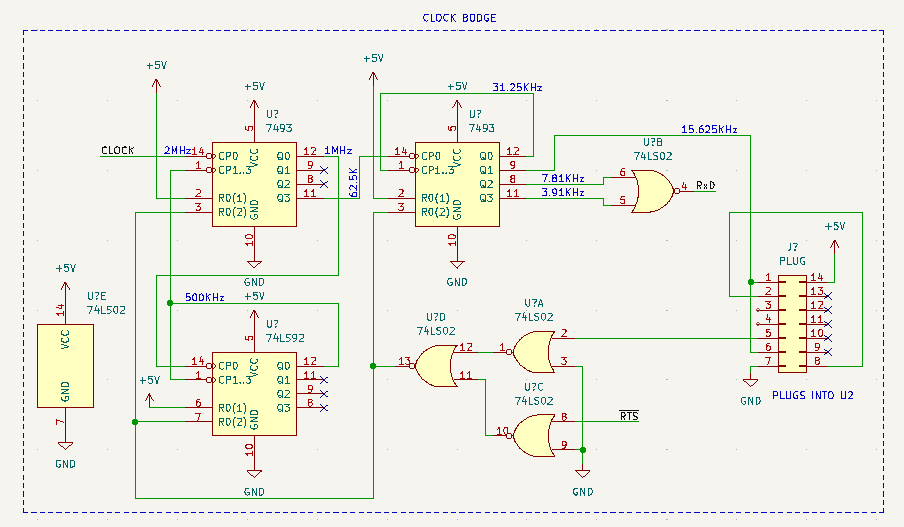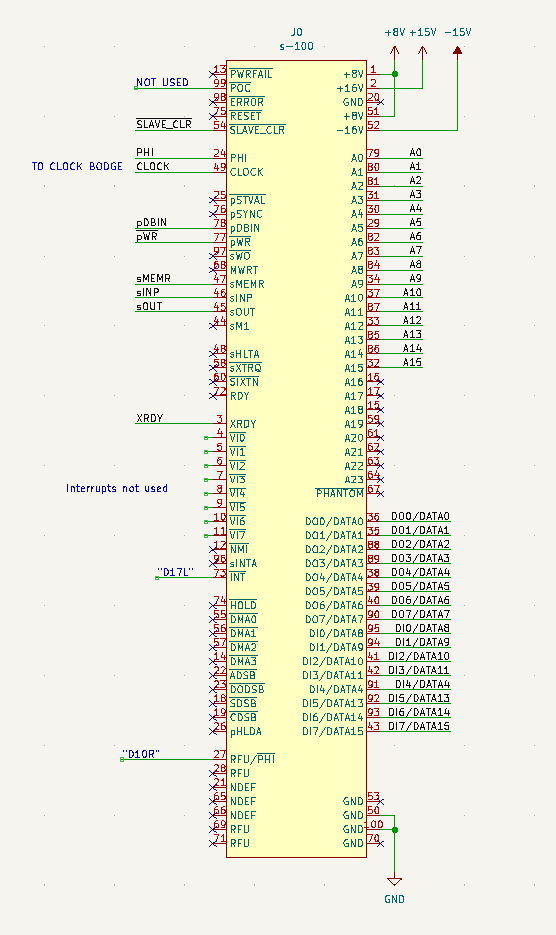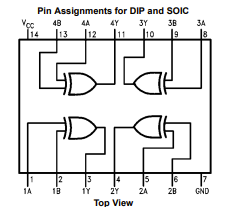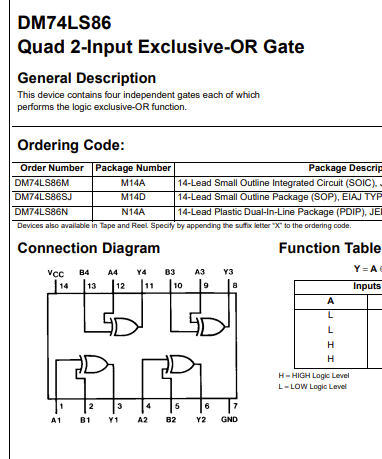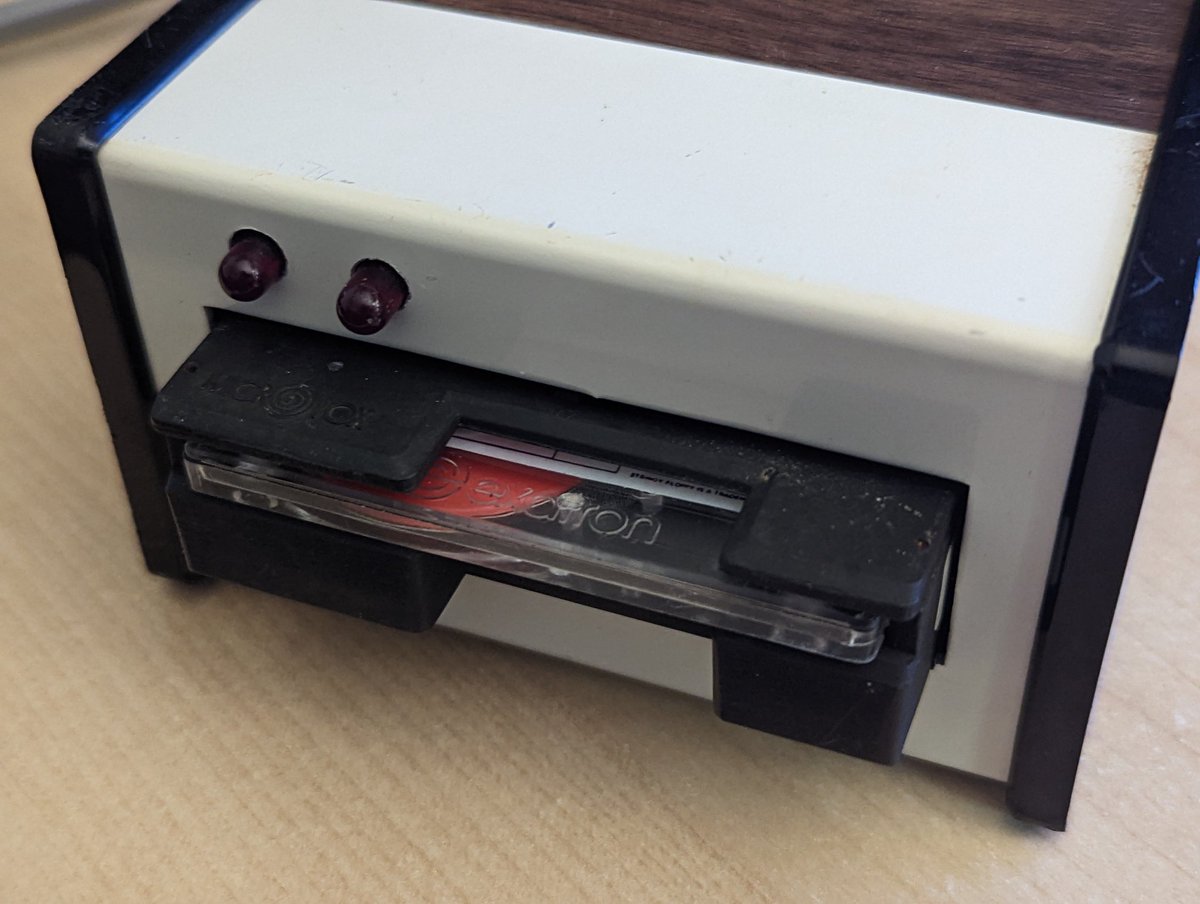despite being called a floppy, the media is actually a very thin tape. Foone has discussed them before, and has some of them!
https://twitter.com/Foone/status/837905521210355712
hmm, this upper board is an "up date," maybe some sort of decision? also the designer seems to have signed all the boards (lower left) 
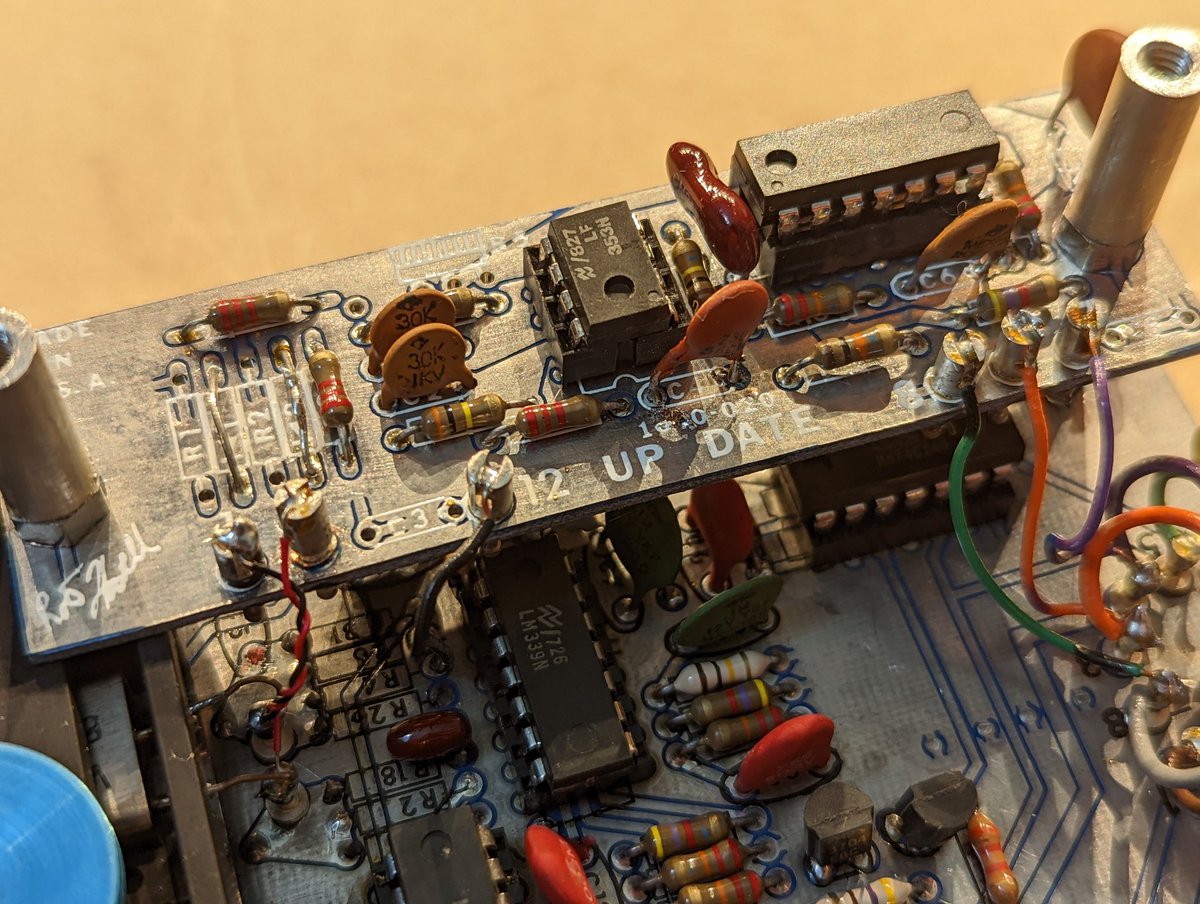
it's also missing the belt.
i'd like to dump the EPROMs but they're 2708 and 2704 devices and I don't have any programmers that can read them. I suppose I could breadboard something. 
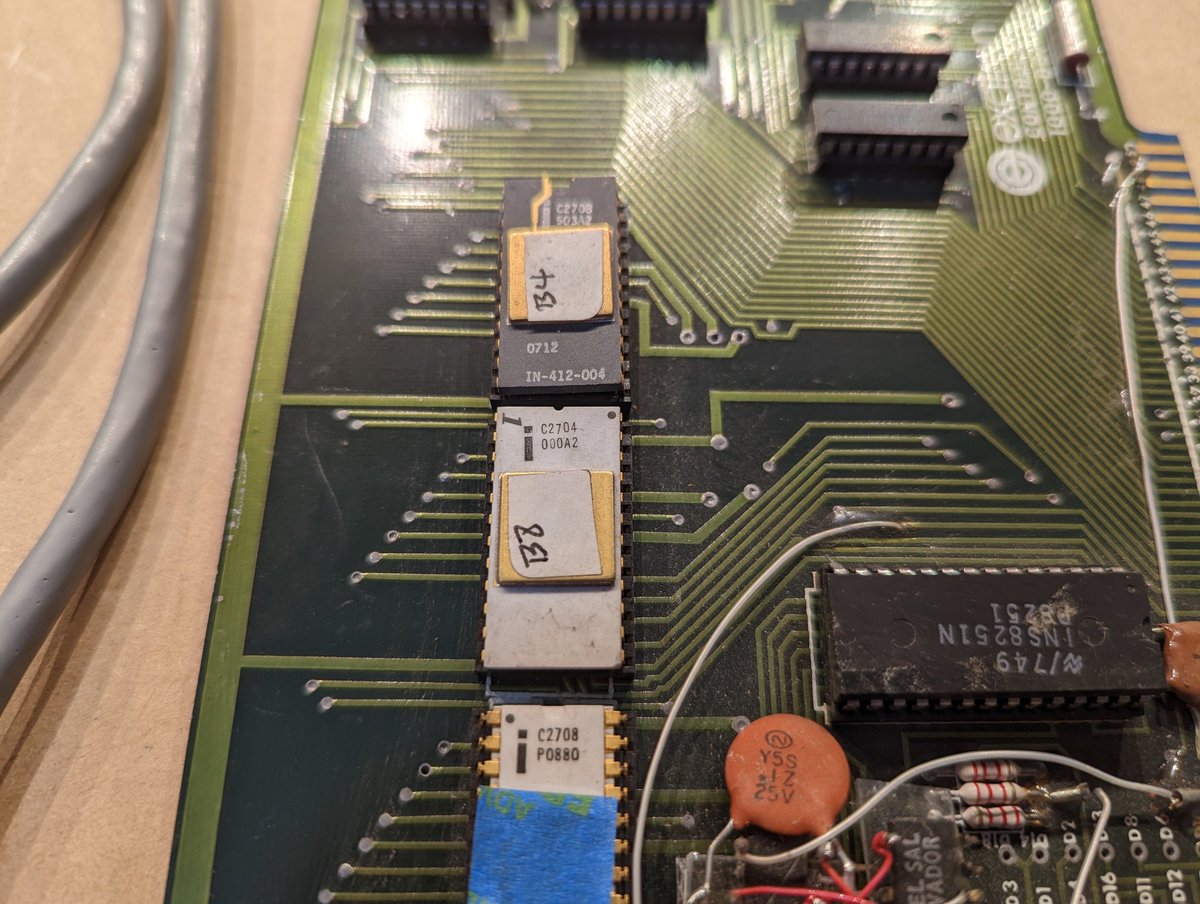
now i just need to figure out the architecture it was designed for.
unplugged one of the mods. the chips are a 7492, 7493, 7493, 74LS02. the '92 and '93 don't have VCC and GND pins in their normal corner spots! 
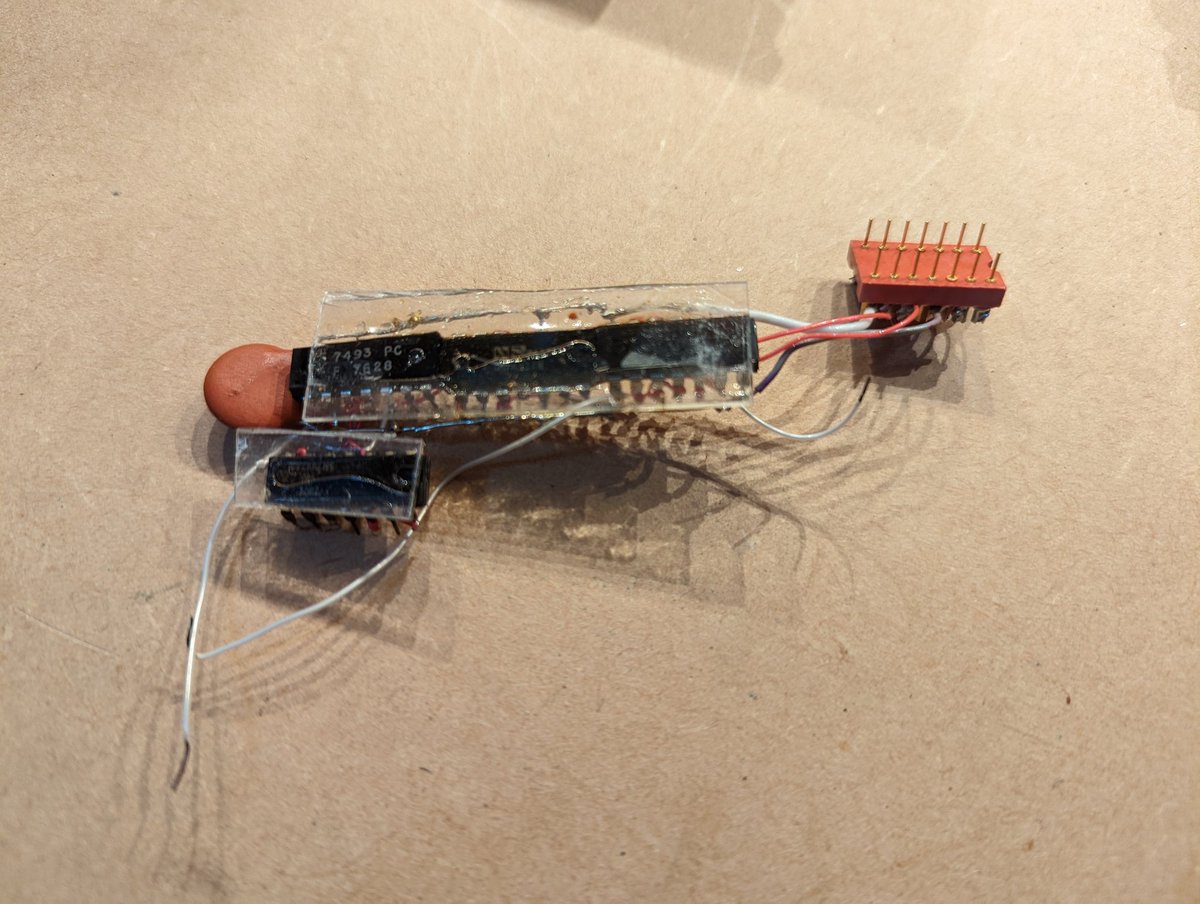
this version of S-100 annoys me, it has 8 data inputs and 8 data outputs. they're not bidirectional. apparently that came later, so instead, this card uses these special transceivers. 
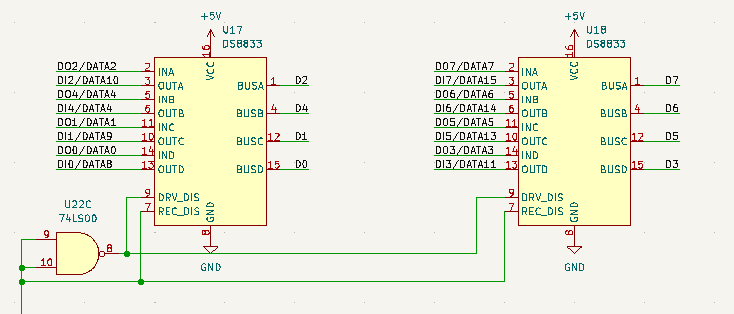
control and communications to the tape drive is done entirely with this 8251. but they don't seem to be using it as a shift register, but basically as a GPIO port. 
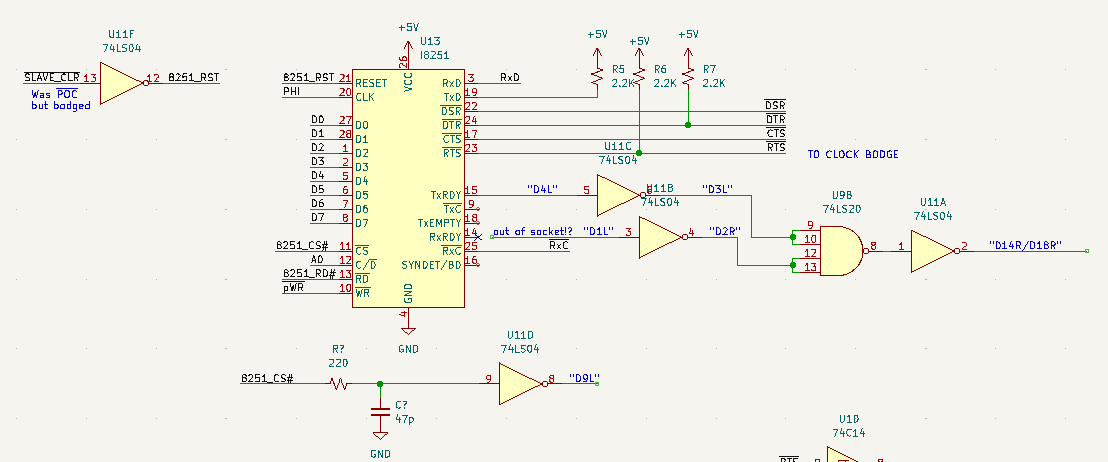
there are actually 4 ROM sockets on the board, but only 3 are used. the one on the far left is occupied by the weird bodge i showed earlier. i think it's SRAM! the bodge wire is the CPU's write control line, since that normally isn't pinned to a ROM socket. 

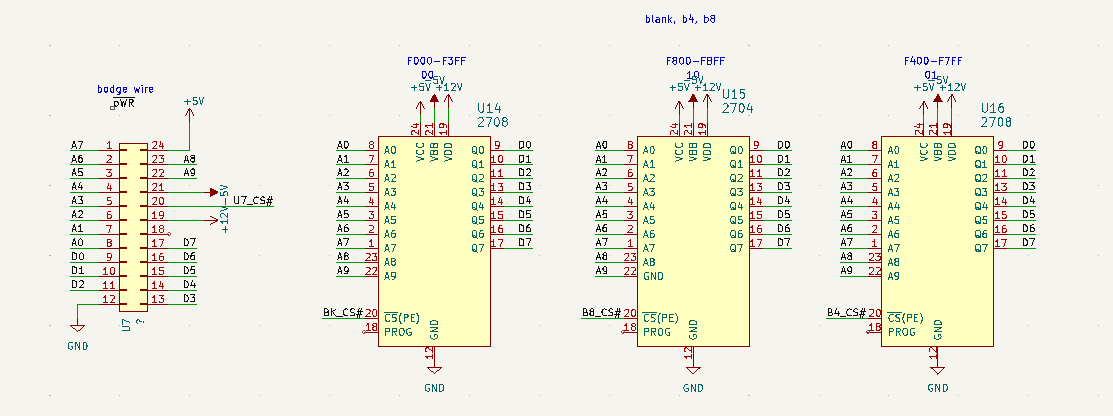
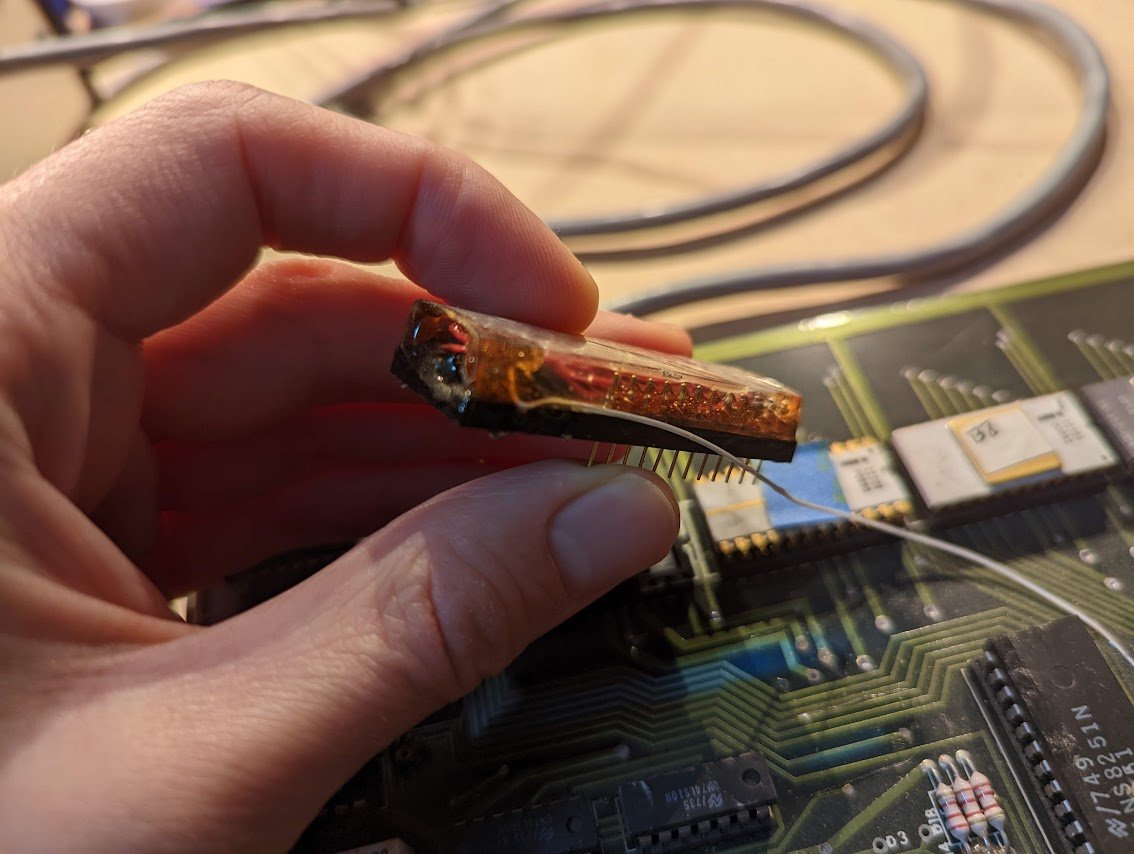
now i'm wondering what U2 and U3 used to be before the clock bodge was plugged into U2. (U3 has no chip in it). 
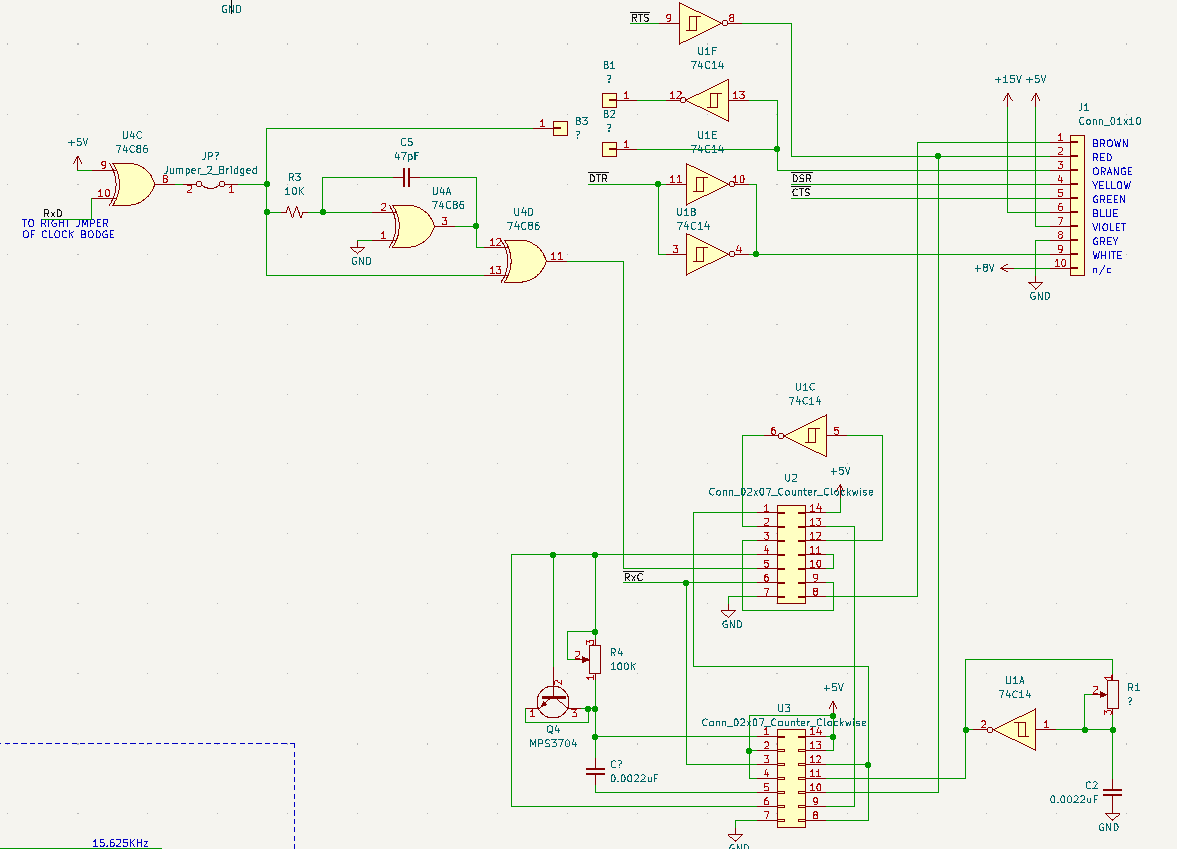
sadly this is real, it's not photoshoppery. 😔
anyway, here's the schematic so far with the 74LS74 installed, which i think is one of the mystery chips. the RxC net goes into the 8251 receiver as the baud rate clock. "rx data" gets inverted and goes to the RxD data input of the 8251. based on that, i think i can figure out U2 
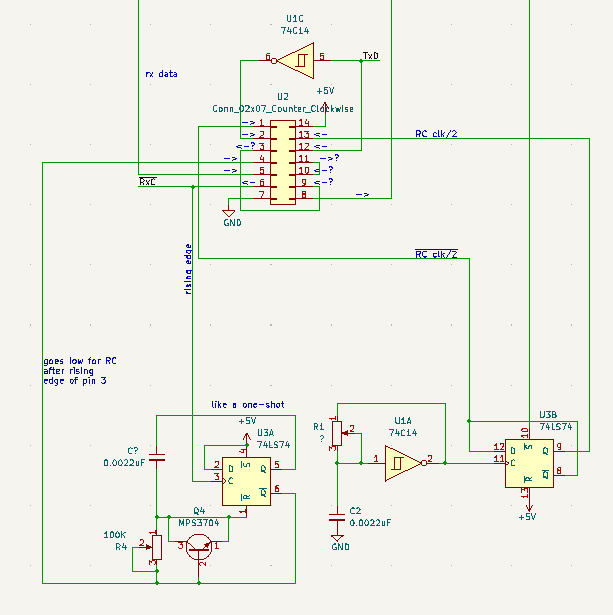
looks like it is part of an older data separator design, at least for the receive gate. the "clock bodge" also has a data separator, and it samples the signal using 64us bit cells. flux transitions closer than 64us are latched as a 1, and longer than 64us are a 0. 
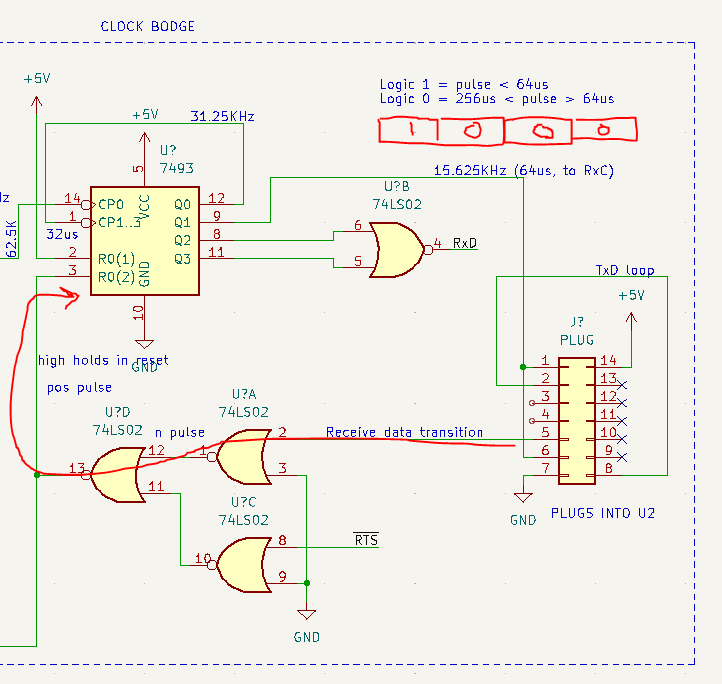
hmm, something isn't right. to make the transmit section work, the gates circled in red need to be NAND gates--anything else gives you no output. but in order for the transmit clock to work (tied to RxC), the gate circled in green needs to be OR or XOR. 
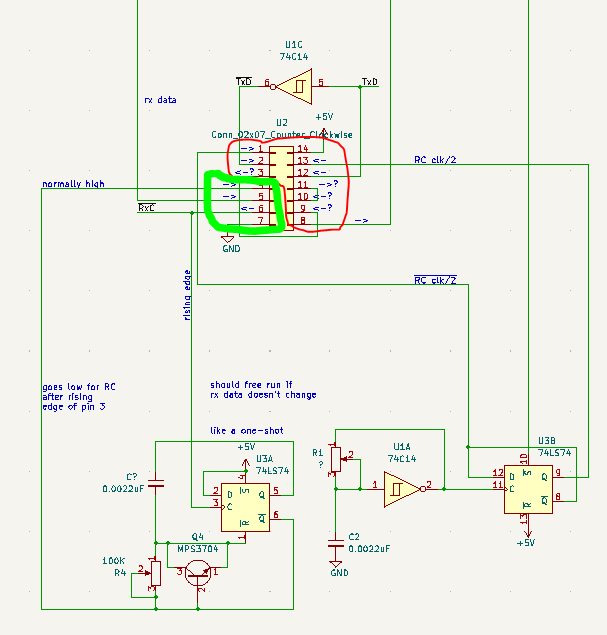
the only clue we get is that the drive itself may allow write pulses to get through the read amplifier and come back out. this *could* wiggle the other input of the logic gate and get it to reset the one-shot that generates the transmit clock. so it *might* be a 74ls00. 



all right, my guess is that this circuit never quite worked right, which explains why the bodge looks factory-made (wires are glued down with epoxy, and other bodge wires on the back are exactly the same way, including ones that fix obvious fab issues like crossed traces)
in other news, @Foone has loaned me a stringy floppy. it's 5 feet long. well, the tape loop inside is. 
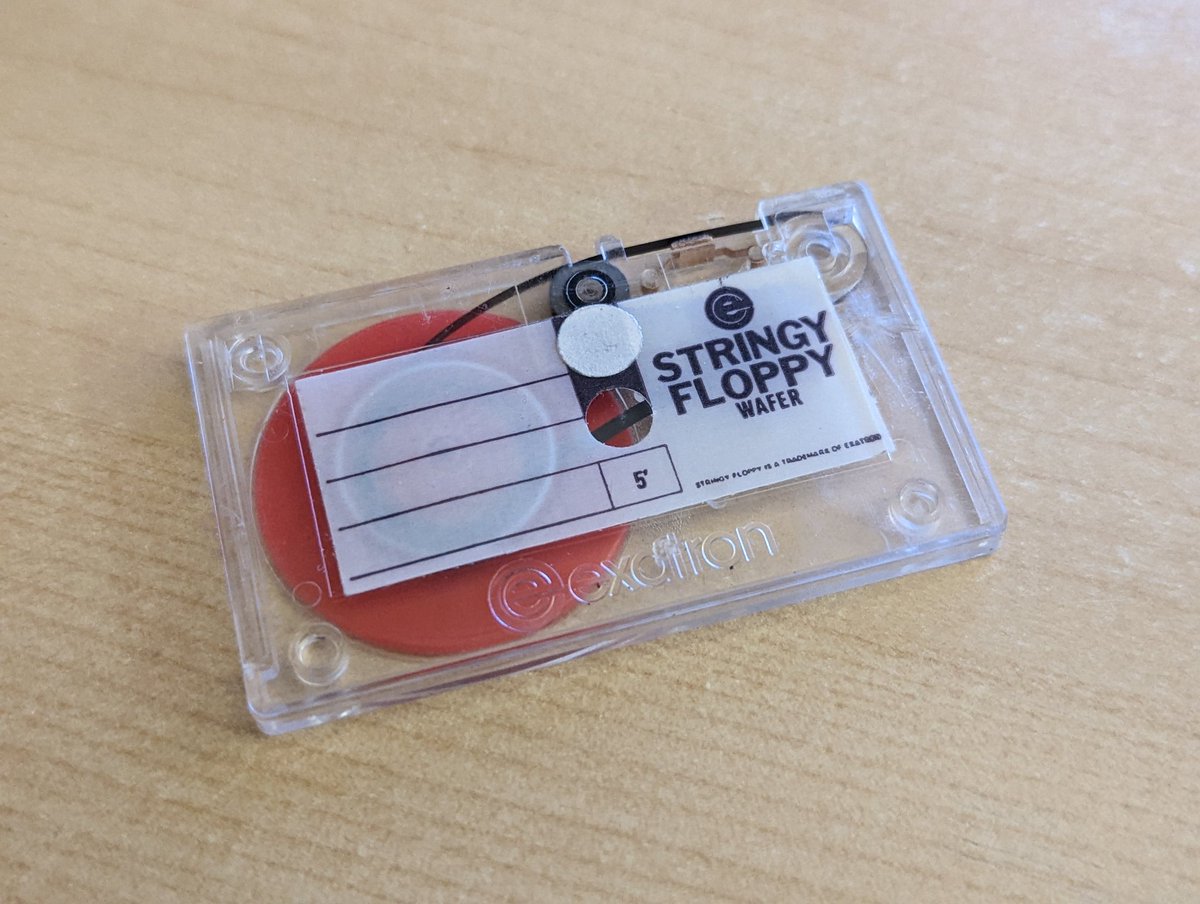
so yeah the Stringy Floppy is like Fruit by the Foot but for data.
• • •
Missing some Tweet in this thread? You can try to
force a refresh


